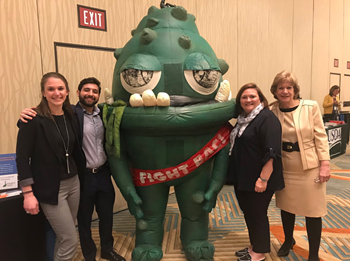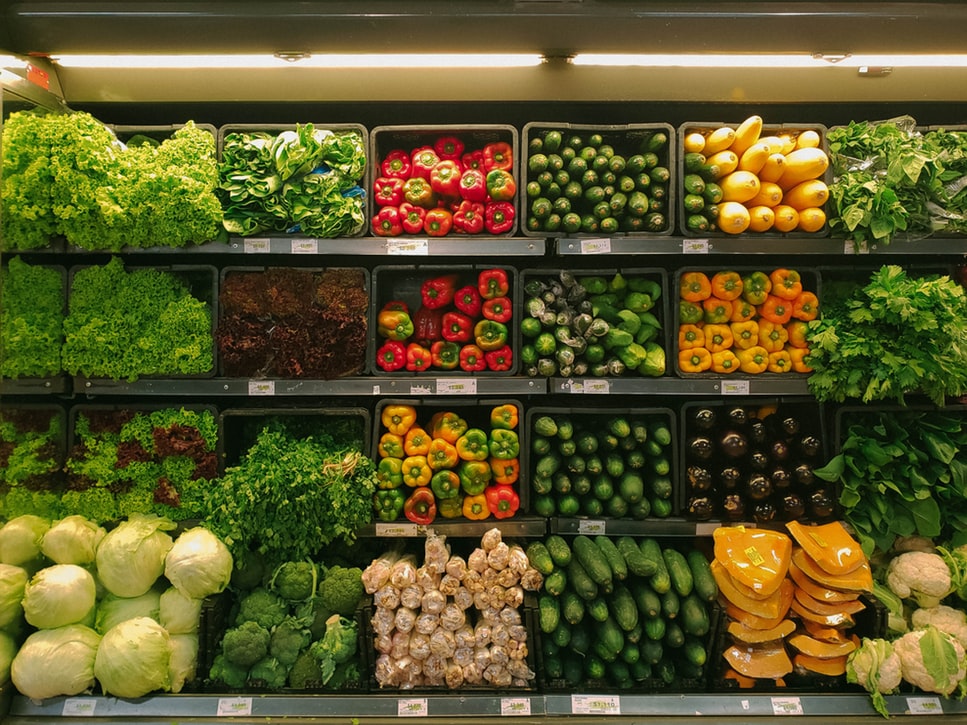By: Adam Friedlander, Specialist, Food Safety and Technical Services, Food Marketing Institute
 The food retail community works hard to train and demonstrate proper food safety practices within our stores to customers. We wear hair nets, we properly wash our hands, we use a food thermometer to ensure raw meat and poultry products are cooked to safe internal temperatures and we always clean and sanitize our work stations. In fact, 93 percent of shoppers trust their grocery store to ensure the food they purchase is safe.
The food retail community works hard to train and demonstrate proper food safety practices within our stores to customers. We wear hair nets, we properly wash our hands, we use a food thermometer to ensure raw meat and poultry products are cooked to safe internal temperatures and we always clean and sanitize our work stations. In fact, 93 percent of shoppers trust their grocery store to ensure the food they purchase is safe.
Yet, I frequently witness top-rated cooking shows or recipe books exposing poor food safety practices to their audiences. Whether a celebrity chef cross contaminates every surface by not washing their hands after handling raw meat, or whether a recipe tells a person to cook their poultry until a specific color is achieved (instead of a measured temperature of 165°F), they are contributing to the subliminal dissemination of poor food safety practices.
Earlier this month, I attended the Consumer Food Safety Education Conference (CFSEC) to learn how retailers can take a leadership role in influencing the trajectory of how food safety practices are portrayed on our favorite television programs, recipe books or Instagram stories.
To kick-off the conference, the FMI Foundation and Partnership for Food Safety Education (PFSE) released the Safe Recipe Style Guide, to help standardize food safety recipe instructions. These instructions can help raise public awareness for proper handwashing procedures, temperature controls, prevention of cross contamination and safe produce handling. The guide is based on research published in the Journal of Food Protection, where consumers followed precise recipes that included clear and simple food safety instructions. The results showed that participants who used food safety instructions in their recipes were more likely to implement these practices when they used similar recipes at home.
To advance food safety awareness, cooking programs and recipe books must actively demonstrate and educate best practices to their audiences. Since retailers abide by strong food safety practices every day, and serve as trusted community leaders, we must begin to form stronger partnerships with influencers to help protect our customers from foodborne illness when they prepare food in their homes. By consistently sharing clean, cook, separate and chill messages with our customers, we can build a community that helps bring food safety to mainstream culture.
Because food safety matters, from consumers to chefs, we must engage everyone in modeling proper food preparation and hand hygiene practices – together, we can create a safer world.
For more information on how to implement food safety practices within your home recipes, visit www.saferecipeguide.org, or www.fmi.org/foodsafety.


 Industry Topics address your specific area of expertise with resources, reports, events and more.
Industry Topics address your specific area of expertise with resources, reports, events and more.
 Our Research covers consumer behavior and retail operation benchmarks so you can make informed business decisions.
Our Research covers consumer behavior and retail operation benchmarks so you can make informed business decisions.
 Events and Education including online and in-person help you advance your food retail career.
Events and Education including online and in-person help you advance your food retail career.
 Food Safety training, resources and guidance that help you create a company food safety culture.
Food Safety training, resources and guidance that help you create a company food safety culture.
 Government Affairs work — federal and state — on the latest food industry policy, regulatory and legislative issues.
Government Affairs work — federal and state — on the latest food industry policy, regulatory and legislative issues.
 Get Involved. From industry awards to newsletters and committees, these resources help you take advantage of your membership.
Get Involved. From industry awards to newsletters and committees, these resources help you take advantage of your membership.
 Best practices, guidance documents, infographics, signage and more for the food industry on the COVID-19 pandemic.
Best practices, guidance documents, infographics, signage and more for the food industry on the COVID-19 pandemic.
